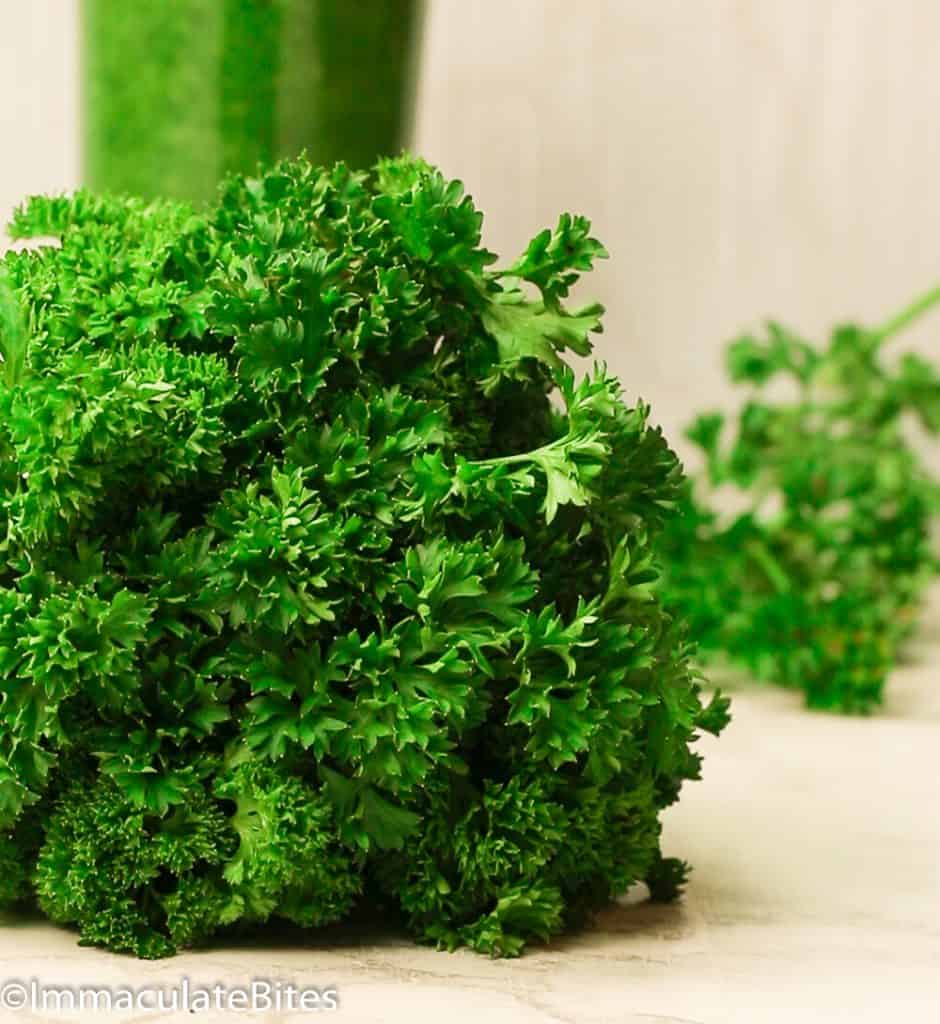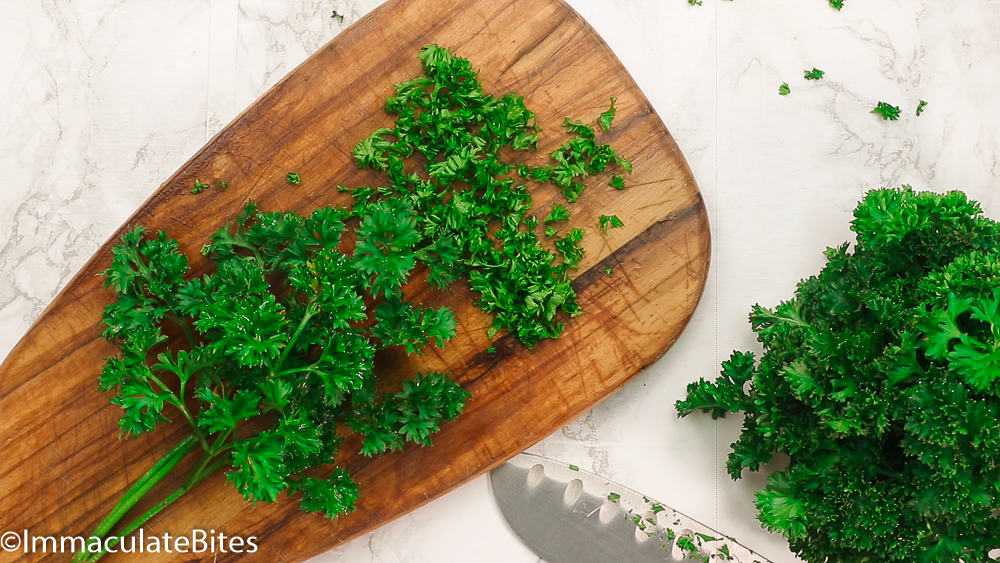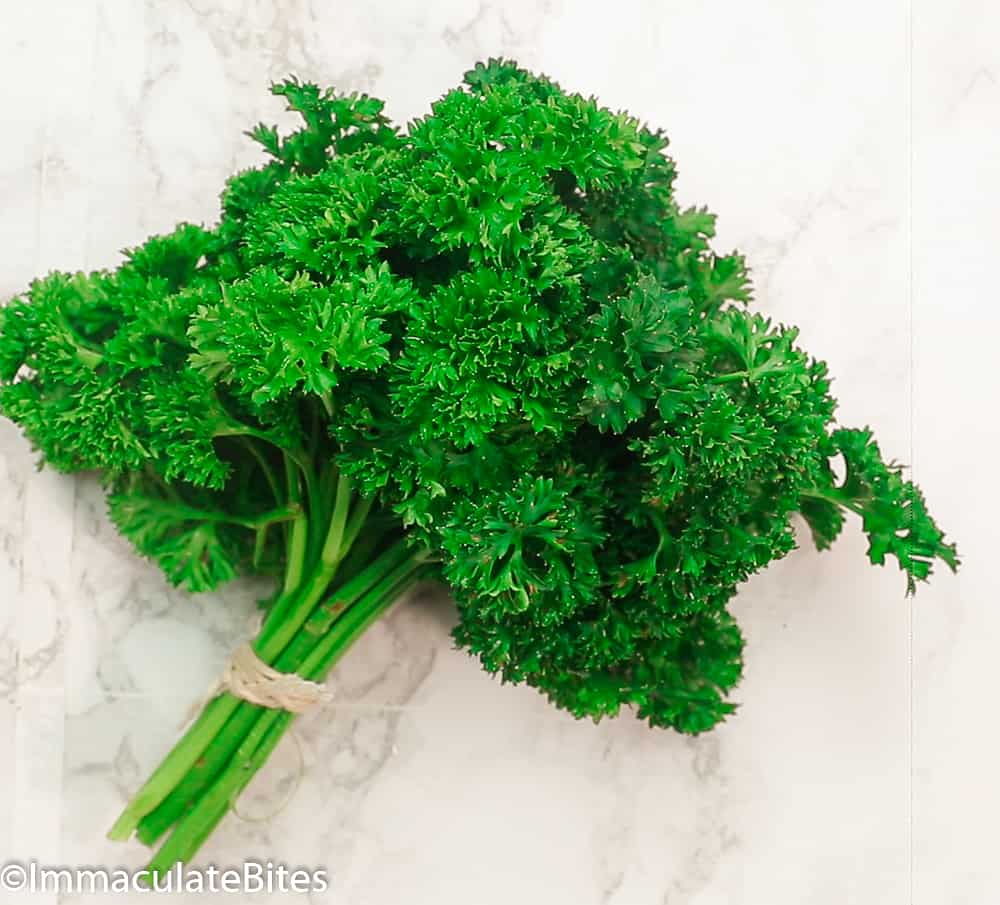Don’t fret out coz I have here the best selection of Parsley Substitute in case you run out of it. Fantastic herbs and salad greens that are visually identical with a similar flavor profile that you can use as parsley replacements for both decorative and culinary purposes. Guaranteed to make your meal equally savory, scrumptious, and comforting!

Unfortunately, sometimes you’re out of fresh herbs like parsley and you don’t have time for a quick grocery run. Good thing, with dried herbs sitting in your pantry, your dish can be saved!
So, what other herbs can you use to substitute for parsley?
Substitutes for Parsley
Parsley is highly versatile with subtle and mild taste compared to other herbs. So, if you’re going to substitute parsley with other herbs you may want to start with a teaspoon for dried herbs and a tablespoon for fresh herbs and work from there. Just add more if desired. 😉
Best Parsley Replacements are:
- Fines Herbes – it’s a premixed seasoning that already contains dried parsley and other herbs with similar subtle notes making it an excellent parsley substitute.
- Chervil – is almost similar to Parsley in terms of taste and appearance (flat-leaf parsley). It is the best choice for dried or fresh parsley substitutes. However, it is milder than parsley, so you may need to double or add more to the amount needed in the recipe to compensate for the taste.
- Tarragon – the taste is a little different from parsley but it gives the perfect balance to other flavors. You can add it to your dish in small amounts and can be used as a garnish as well.
- Chives – has a pungent taste similar to onions and garlic. Both fresh and dried chives work great as parsley substitutes because of their taste and bright green color suited for garnishing.
- Celery Leaves – This can be used as a garnish because it closely resembles flat-leaf parsley. However, it is not a good substitute for parsley in cooking because it’s extremely lacking in flavor.
- Cilantro – has a strong flavor which may be too overpowering for a dish. But it can be used as a garnish because the leaves are similar to fresh Italian parsley. Though you can use fresh or dried cilantro as a parsley replacement for dishes with strong flavors like in Mexican and Thai foods.
- Carrot Greens – is not an ideal replacement for fresh or dried parsley because of their bitterness. But it can still be used for its decorative purposes.
- Basil – is a strong-flavored herb, fresh or dried, which can only work as a parsley substitute for Italian dishes like pasta because of its heavy taste.
- Oregano – like basil, it has a bolder taste than parsley with minty flavor notes. So, you need to use less fresh or dried oregano if replacing parsley in cooking. You may also use it for garnishing.
- Arugula – a salad green that is very peppery and mildly bitter. You need to chop it finely for culinary purposes. And use a small amount in cooking to avoid ruining your dish due to its bitterness.
- Endive – is another salad green that mostly resembles curly leaf parsley. Which makes it an excellent choice as a parsley replacement for garnishing. It has bold flavors similar to Arugula. Adding too much may cause bitterness to your dish, so watch out for that. 😉
To sum it all, Chervil and Chives are excellent parsley replacements for culinary purposes. While, cilantro, celery leaves, and carrot greens are the best parsley substitutes for garnishing.
What is Parsley?

Parsley is one of the most used herbs and pretty popular among chefs as a culinary herb or dried spice. It’s highly versatile, easily accessible, and inexpensive.
It has been a culinary staple because of its distinct taste. It adds freshness to any dish with its earthy and slightly peppery flavor notes. Also, often used for decorative purposes which can make any dish look fancy and elegant.
Different Kinds of Parsley
In most recipes, it doesn’t say which type of parsley to use. So, if you’re new to cooking, you’re probably using whatever parsley is available to you. But that’s okay, coz’ generally they can be used interchangeably; well, except for root parsley.
Anyway, they are actually 4 types of Parsley:
- Curly Parsley – usually used for garnishing because of its decorative properties – cute bushy curly leaves. But it can be used as a flavor enhancer as well because of its pleasant taste.
- Flat Leaf or Italian Parsley – is the most common type of parsley often used to add more herb flavors to our favorite dishes like pasta, stew, and soup. It has a distinct and stronger flavor than curly parsley which makes it a culinary staple.
- Japanese Parsley – From leaves down to the roots, all are edible for this kind of parsley. Amazing, huh? It’s best used in Asian-inspired dishes like salad, soup, and stir-fries to add aroma.
- Hamburg Parsley (a.k.a. Root Parsley) – Unlike the other parsley types where we use their leaves, this one is famous for its roots. It’s like an albino carrot that can be eaten raw or cooked. While the leaves greatly differ in flavor and can’t be used as a substitute to a recipe that calls for flat-leaf parsley.
Fresh vs Dried
- Flavor-wise – Fresh parsley is a good flavor enhancer because it has a stronger flavor than the dried parsley which has a milder and more subtle flavor, somewhat subdued.
- Cooking – Dried parsley can endure long cooking hours without losing its flavor; unlike fresh parsley that needs to be added at the end of the cooking time because it cannot withstand long cooking hours. However, compared to curly parsley, flat-leaf can be cooked longer and has more flavors.
- Garnishing – Fresh parsley is always the best option because it is more vibrant and brighter in color. While dried parsley can be used as garnishing for soups and salads to add some touch of green.
- Availability – Dried ones can be stored for a long time and can be used when you don’t have fresh parsley on hand. Though fresh ones can be easily accessible in local grocery stores; they can wither easily when not properly stored.

How Do I use Parsley?
- Meat Dishes – used as a garnish for mouthwatering meat dishes like Stuffed Pork Loin Roast, Easy Smothered Pork Chops, and Tomahawk Steak. It brightens the flavor of the dish and it balances the flavors as well.
- Salad – Its herby and refreshing flavor makes it an interesting mix in salads. You may want to try this healthy and hearty Parsley Salad here. The curly parsley goes well with cherry tomatoes, pine nuts, and mushroom in wine vinegar and Dijon mustard dressing.
- Salad Dressing – Parsley is also a good addition to dressings like vinaigrettes and mayo-based dressings like ranch salad dressing. I suggest you try my Cajun Chicken Avocado Salad and taste the interesting flavor notes of parsley. You’re gonna love it! 😉
- Smoothie – Combine Italian Parsley (stem and leaves) with kale leaves, organic berries, banana, and flax seeds and you’ll have an energizing healthy drink. Not too sweet but guaranteed to be so refreshing. 😉
- Soup and Stews – Though parsley is mostly used for its decorative purposes, it can actually enhance and add wonderful flavors to the soups and stews. A great example is my Lentil Soup. Truly comforting and will surely warm your soul.
- Seasonings – Parsley can be found in Italian Seasoning along with other herbs. It has the perfect blend of herbs that makes any dish more savory and flavorful. Often used in pasta dishes, meatballs, salad, and meat marinades.
- Breath Freshener – Parsley to the rescue! If you’re out on a date and you ran out of breath mints, you can chew the fresh parsley from your meal’s garnishing to freshen up your breath in an instant. 😉
Substituting Fresh Parsley to Dried Parsley and Vice Versa
If you’re going to use fresh parsley as a dried parsley substitute, you need to be mindful of the flavor and adjust the amount of what the recipe calls for. Because fresh parsley has stronger flavors than dried ones.
For instance, if a recipe requires dried parsley, you’ll need to add only half of the amount when using fresh parsley.
Technically, you can use dried parsley as a fresh parsley replacement, too. Though it’s really not an ideal choice because of its muted flavor. You’ll need to double or triple the amount needed in the recipe.


Leave a Review